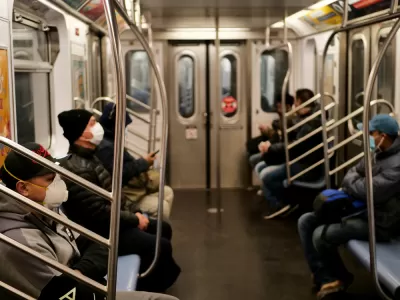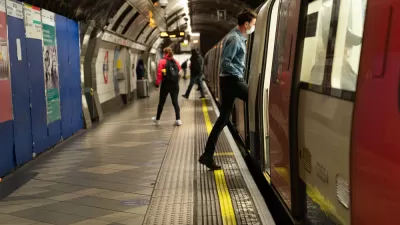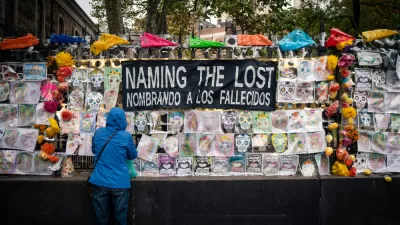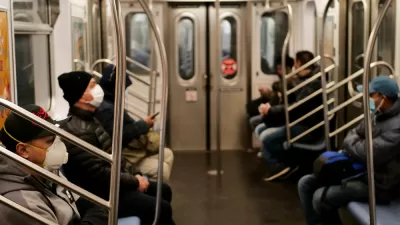A knee-jerk history of coronavirus in New York City is being revised.

Janette Sadik-Khan, former commissioner of the New York City Department of Transportation and co-author of Streetfight: Handbook for an Urban Revolution, joins with Seth Solomonow, the other co-author of Streetfight, to write an article for The Atlantic that reclaims the high ground of epidemiological evidence in the spread of coronavirus in New York City.
To sum: there was never as much evidence about the spread of the novel coronavirus on public transit in New York as some reports and media narratives claimed.
The headline of a recent report by an MIT economics professor read like the title of a 1950s horror film: “The Subways Seeded the Massive Coronavirus Epidemic in New York City.” The report concluded that New York’s subway system was “a major disseminator—if not the principal transmission vehicle” in the city’s COVID-19 outbreak.
Numerous articles followed and the narrative gained steam. "Some elected officials urged Governor Andrew Cuomo to shut down New York’s transit system," according to the article.
Underlying all that fear, however, "is an assumption of danger that, so far, research has not borne out." For instance, "[a] recent study in Paris found that none of 150 identified coronavirus infection clusters between early May and early June originated on the city’s transit systems. A similar study in Austria found that not one of 355 case clusters in April and May was traceable to riding transit."
For more insight into understanding the risk of contagion while riding public transit, see a recent Planetizen article written by Todd Litman.
FULL STORY: Fear of Public Transit Got Ahead of the Evidence

Planetizen Federal Action Tracker
A weekly monitor of how Trump’s orders and actions are impacting planners and planning in America.

San Francisco's School District Spent $105M To Build Affordable Housing for Teachers — And That's Just the Beginning
SFUSD joins a growing list of school districts using their land holdings to address housing affordability challenges faced by their own employees.

The Tiny, Adorable $7,000 Car Turning Japan Onto EVs
The single seat Mibot charges from a regular plug as quickly as an iPad, and is about half the price of an average EV.

Seattle's Plan for Adopting Driverless Cars
Equity, safety, accessibility and affordability are front of mind as the city prepares for robotaxis and other autonomous vehicles.

As Trump Phases Out FEMA, Is It Time to Flee the Floodplains?
With less federal funding available for disaster relief efforts, the need to relocate at-risk communities is more urgent than ever.

With Protected Lanes, 460% More People Commute by Bike
For those needing more ammo, more data proving what we already knew is here.
Urban Design for Planners 1: Software Tools
This six-course series explores essential urban design concepts using open source software and equips planners with the tools they need to participate fully in the urban design process.
Planning for Universal Design
Learn the tools for implementing Universal Design in planning regulations.
Smith Gee Studio
City of Charlotte
City of Camden Redevelopment Agency
City of Astoria
Transportation Research & Education Center (TREC) at Portland State University
US High Speed Rail Association
City of Camden Redevelopment Agency
Municipality of Princeton (NJ)





























